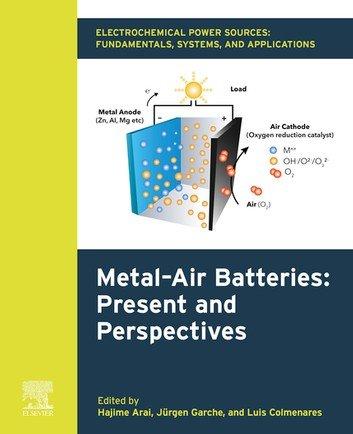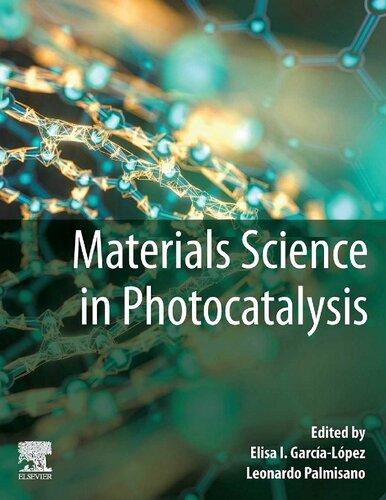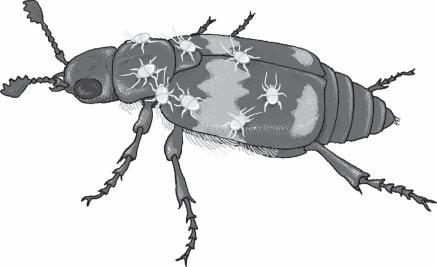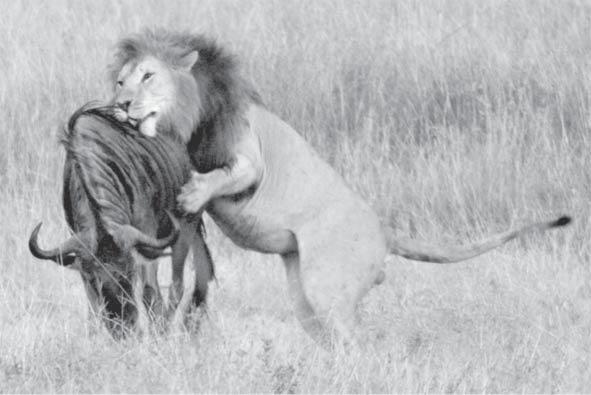Instant digital products (PDF, ePub, MOBI) ready for you
Download now and discover formats that fit your needs...
Introduction to 80×86 Assembly Language and Computer Architecture – Ebook PDF Version
https://ebookmass.com/product/introduction-to-8086-assembly-languageand-computer-architecture-ebook-pdf-version/
ebookmass.com
Stern’s Introductory Plant Biology 13th Edition – Ebook PDF Version
https://ebookmass.com/product/sterns-introductory-plant-biology-13thedition-ebook-pdf-version/
ebookmass.com
Campbell Biology: Concepts & Connections 9th Edition –Ebook PDF Version
https://ebookmass.com/product/campbell-biology-conceptsconnections-9th-edition-ebook-pdf-version/
ebookmass.com
Electrochemical Power Sources: Fundamentals, Systems, and Applications: Metal-Air Batteries: Present
and Perspectives Hajime Arai
https://ebookmass.com/product/electrochemical-power-sourcesfundamentals-systems-and-applications-metal-air-batteries-present-andperspectives-hajime-arai/ ebookmass.com




https://ebookmass.com/product/gestao-de-investimentos-e-geracao-devalor-carlos-patricio-samanez/
ebookmass.com
The Wolf Wore Plaid: 6 (Highland Wolf) Terry Spear [Spear

https://ebookmass.com/product/the-wolf-wore-plaid-6-highland-wolfterry-spear-spear/
ebookmass.com
JACE: Summerset Shore University Book One N. Boeyer

https://ebookmass.com/product/jace-summerset-shore-university-bookone-n-boeyer/
ebookmass.com
Heat Transfer 1 Michel Ledoux
https://ebookmass.com/product/heat-transfer-1-michel-ledoux/
ebookmass.com
Materials
Science in Photocatalysis 1st Edition Elisa I. Garcia Lopez (Editor)
https://ebookmass.com/product/materials-science-in-photocatalysis-1stedition-elisa-i-garcia-lopez-editor/
ebookmass.com



eTextbook 978-9351500827 Discovering Statistics Using IBM SPSS Statistics, 4th Edition
https://ebookmass.com/product/etextbook-978-9351500827-discoveringstatistics-using-ibm-spss-statistics-4th-edition/
ebookmass.com

VI Contents
1.6.1.3ScenariosofDefenseReactionsAgainstParasites 63
1.6.1.4Immunopathology 67
1.6.2ImmuneEvasion 68
1.6.3ParasitesasOpportunisticPathogens 72
1.6.4HygieneHypothesis:DoParasitesHaveaGoodSide? 74 FurtherReading 76
1.7HowParasitesAlterTheirHosts 77
1.7.1AlterationsofHostCells 78
1.7.2IntrusionintotheHormonalSystemoftheHost 79
1.7.3ChangingtheBehaviorofHosts 82
1.7.3.1IncreaseintheTransmissionofParasitesbyBloodsucking Vectors 83
1.7.3.2IncreaseinTransmissionThroughtheFoodChain 83
1.7.3.3IntroductionintotheFoodChain 88
1.7.3.4ChangesinHabitatPreference 92 FurtherReading 93
2BiologyofParasiticProtozoa 95
RichardLuciusandCraigW.Roberts
2.1Introduction 97 FurtherReading 98
2.2Metamonada 99
2.2.1 Giardialamblia99 FurtherReading 102
2.3Parabasala 102
2.3.1 Trichomonasvaginalis103
2.3.2 Tritrichomonasfoetus106 FurtherReading 106
2.4Amoebozoa 107
2.4.1 Entamoebahistolytica108
2.4.2 Entamoebadispar114
2.4.3Other Entamoeba Species 114
2.4.4FurtherIntestinalAmoebae 115
2.4.5 Acanthamoeba115 FurtherReading 116
2.5Euglenozoa 117
2.5.1CellBiologyandGenome 118
2.5.2Phylogeny 121
2.5.3 Trypanosomabrucei121
2.5.4 Trypanosomacongolense131
2.5.5 Trypanosomavivax132
2.5.6 Trypanosomaevansi133
2.5.7 Trypanosomaequiperdum133
2.5.8 Trypanosomacruzi134
2.5.9 Leishmania141
3.3.4.5 Dictyocaulusviviparus315
3.3.4.6 Ascarislumbricoides315
3.3.4.7 Ascarissuum318
3.3.4.8 Toxocaracanis318
3.3.4.9 Anisakissimplex and Anisakis spp. 320
3.3.4.10 Dracunculusmedinensis321
3.3.4.11 Enterobiusvermicularis323
3.3.4.12Filariae 325
3.3.4.13 Wuchereriabancrofti and Brugiamalayi326
3.3.4.14 Onchocercavolvulus330
3.3.4.15 Loaloa and Dirofilariaimmitis334
3.3.4.16RodentModelsofFilariosis 334 FurtherReading 335
4Arthropods 337
BrigitteLoos-FrankandRichardP.Lane
4.1Introduction 338
4.1.1VectorConcepts 340
4.1.2ImpactofBloodfeeding 343 FurtherReading 343
4.2Acari–MitesandTicks 344
4.2.1Morphology 346
4.2.2Development 347
4.2.3Anactinotrichida(= Parasitiformes) 347
4.2.3.1Mesostigmata 347
4.2.3.2 Dermanyssusgallinae348
4.2.3.3 Varroadestructor348
4.2.3.4Metastigmata(= IxodidaorIxodoidea,Ticks) 350
4.2.3.5Development 353
4.2.3.6TickBitesandSaliva 353
4.2.3.7Ixodidae–HardTicks 354
4.2.3.8Argasidae(SoftTicks) 358
4.2.3.9Tick-BorneDiseases 359
4.2.4Actinotrichida(= Acariformes) 361
4.2.4.1Prostigmata = Actinedida = Trombidiformes 362
4.2.4.2Trombiculidae–HarvestMites,Chiggers 363
4.2.4.3Astigmata = Acaridida = Sarcoptiformes 364 FurtherReading 365
4.3Crustacea 366
4.3.1 Argulusfoliaceus367
4.3.2 Sacculinacarcini368 FurtherReading 370
4.4Insecta 370
4.4.1Phthiraptera–Lice 374
4.4.2“Mallophaga”–ChewingLice 375
Preface
Parasitismisaspecializedwayoflife,pursuedbyorganismsthathaveevolvedto thriveattheexpenseofalivinghost.Therefore,inabroadsense,allpathogenslike viruses,bacteria,oreukaryoticinfectiousagentsareparasitesandthussharemany commonfeatures.However,theyalsohaveimportantdifferences.Forexample, virusesandbacteriaaregeneticallylesscomplexandemploydifferentstrategies forexploitingahost,leadingtodifferentdiseasesyndromes.Asaconsequence, differentscientificfieldshaveemerged,ofwhichthedisciplineofparasitologyis onethatdealswitheukaryoticpathogens,namely,protozoa,worms,andarthropods.Parasites,inthisnarrowersense,areahugeburdentomankind,withbillions ofinfectedpeople,mainlyintropicaldevelopingcountrieswithrelativelypoor hygiene.Alongwiththeirmedicalandveterinaryimportance,parasiteshavea fascinatingbiology,whichisthethemeofthisbook. TheBiologyofParasites is basedonanearlierGermanbook(Lucius&Loos-Frank(2008),SpringerVerlag, Heidelberg),whichhasbeenextendedandupdatedbythecurrentteamofauthors.
Thelivinghostisaveryparticularniche;itisnotaneutralplaceatall.Parasites areinvolvedinaconstantstrugglewiththeirhosts,whostrivetoridthemselves oftheunwantedcompany,deployingallsortsofmechanismsagainstthem.These rangefromdefensivebehaviortotheeffectormoleculesandcellsofacomplex immunesystem.Inspiteofsuchdefenses,anextraordinarynumberofanimals haveadoptedparasitismasamodeoflife;somespecialistsbelievethat >50%of animalspeciesareparasitesorhaveatleastaparasiticphaseintheirlifecycle. Itseemsthattheparasiticlifestyleissorewardingthatithasbeenworththe greateffortparasiteshavemadetodevelopmostintriguingmeansoflocating theirhosts,survivewithinoronthem,produceoffspring,andensurethatthenext generationreachesanewhost.Toexploitahost,parasitesmaychangetheirmorphologybeyondallrecognition:theymaytrickandcheatbydisguisingthemselves ormanipulatetheirhost’scellularpathwaysoreventheirbehavior.Becauseof theseextraordinary,bizarre,orseemingly“otherworldly”abilities,parasiteshave alwaysfascinatedbiologistsandcapturedtheattentionofthegeneralpublic.
Theantagonisticrelationshipbetweenpathogensandtheirhostsdrivestheevolutionofbothadversariesinaprofoundmanner.Thisarmsracehasaffectedthe evolutionofsomeofthemostimportantprocessesoflife,forexample,sexual reproductionandtheimmunesystem.Italsoshapedthegenomesofbothparties

Figure1.1 Parasitosmask,aminiatureofatheatermaskofGreekcomedy;terracotta, around100B.C.(FromMyrine(AsiaMinor);antiquitiescollectionoftheBerlinStateMuseums.Image:CourtesyofThomasSchmid-Dankward.)
Theprincipleofoneside(theparasite)takingadvantageoftheother(thehost) appliestoviruses,allpathogenicmicroorganisms,andmulticellularparasites alike.Thisiswhyweoftenfindthatnocleardistinctionismadebetween prokaryoticandeukaryoticparasites.Withregardto parasites, weusuallydonot differentiatebetweenviruses,bacteria,andfungiontheonehandandanimal parasitesontheother;wetendtoseeonlythecommonparasiticlifestyle.Even moleculestowhichafunctionintheorganismcannotbeassignedaresometimes describedasparasitic,suchasprions,forexample,thecausativeagentofspongiformencephalopathy,orapparentlyfunctionless“selfish”DNAplasmidsthatare presentinthegenomeofmanyplants.Manybiologistsareoftheopinionthat onlyparasiticprotozoa,parasiticworms(helminths),andparasiticarthropodsare parasitesinthestrictsenseoftheterm.Parasitology,asafield,isconcernedonly withthosegroups,whileviruses,bacteria,fungi,andparasiticplantsaredealt withbyotherdisciplines.Thisrestrictionclearlyhamperscooperationwithother disciplines,somethingthatseemsantiquatedintoday’smodernbiology,where alloflife’sprocessesaretracedbacktoDNA;itisgratifyingthattheboundaries haverelaxedinrecentyears.However,eukaryoticparasitesaredistinguished fromvirusesandbacteriabytheircomparativelyhighercomplexity,which impliesslowerreproductionandlessgeneticflexibility.Thesetraitstypicallydrive eukaryoticparasitestoestablishlong-standingconnectionswiththeirhosts, usingstrategiesdifferentfromthe“hit-and-run”strategiesusedbymanyviruses andbacteria.Forthesereasons,andforthesakeofclarityandtradition,only parasitesinthestrictersenseoftheterm,thatis,parasiticprotozoa,helminths, andparasiticarthropodsaredealtwithinthisbook.
1.1.2
TypesofInteractionsBetweenDifferentSpecies
Thecoexistenceofdifferentspeciesoforganismsinvolvesinteractionsamong themthattakemanydifferentformsinwhichthebenefitsandcostsareoftenvery unevenlydistributed.Bothpartnersbenefitfrommutualisticrelationships,while inantagonisticrelationshipstheadvantagelieswithonlyoneside.However,a directrelationshipbetweentwospeciesisseldomcompletelyneutral.Different typesofinteractionsarenotalwayseasytodistinguish,suchthattransitions betweenthemareoftenfluidandthedifferencessubtle.Thespectrumofthe partnershipsbetweendifferentorganismscanbebestillustratedbytheuseof concreteexamples.
1.1.2.1 MutualisticRelationships
Ifdifferentpartnersrelyontheircoexistenceandarelimitedintheirviabilityor evennonviablewhenseparated,thiscloseassociationisdescribedasa symbiosis (Greek: sym = together, bíos = life).Forexample,Lichens–acombinationoffungi andphotosyntheticallyactivealgae–canonlycolonizecompletelynewhabitatsinthiscombinedform.Anotherexampleisthepartnershipoftermiteswith cellulose-digestingprotozoa,whichliveintheintestinalblindsacsofthehosts. Themetabolitesoftheprotozoacomplementthehosts’ratherunbalanceddiet. Whenthetwopartnersbenefitfromcoexistencewithoutlosingtheabilitytolive independently,itisknownas mutualism.Aclosemutualisticrelationshipexists betweenclownfish(anemonefish)andseaanemones:thefishcangainprotectionfrompredatorsbysnugglingintothetentaclesoftheseaanemoneswithoutbeingattackedbythelatter’spoisonousstingingcells(Figure1.2)andalways returnstotheanemonewhendangerthreatens.Theseaanemonebenefitsinturn

Figure1.2 Aclownfishinthetentaclesofaseaanemone.Thepartnersformamutualistic symbiosis,buttheycanalsosurviveindependently.(Image:RichardOrr,courtesyofRandom HousePublishers,Munich.)
Figure1.3 Thepearlfish Carapus (syn. Fierasfer ) acus livesinthewaterlungsofseacucumbers.(EditedfromOcheG.(1966)“TheWorldofParasites”,Springer-VerlagHeidelberg.)
fromthefoodremnantsofthefish.AnotherexampleofalessintimatemutualisticassociationistheinteractionbetweenCapebuffaloandthecattleegret. Whilegrazing,abuffaloflushesoutinsects,whicharethensnappedupbythe egrets–andthedanger-sensitivebirdswarnthebuffalobyflyingupwhenthey spotbigcatsapproaching.
Commensalism describesafeedingrelationship,inwhichonepartnerbenefits withoutprovidinganyreciprocalbenefitsnorimposinganycosttotheother.The commensaldrawssustenancefromthehost’swastematerialsorfromthecomponentsofthehost’sfood,whichareofnovaluetoit.Theflagellatesthatresidein theanalcanalsofarthropodsprovideanexample,becausetheseareareasofthe digestivesystemwherenomorefoodabsorptiontakesplace.
However,therearesymbioticrelationshipsinwhichahostismerelyusedasa livingplace.Thisinvolvesorganismssettlingontheexternalsurfacesofadifferent species(e.g.,barnaclesoncrabsandshellfish),oreveninsidethehost’sbody.One exampleofthisisthepearlfish,amemberofthecodfamily,whichcangrowtoa lengthofapproximately20cm.Thefishlivesinthewaterlungsofseacucumbers intowhichitskillfullywriggles,pointedtailfirst(Figure1.3).Pearlfishonlyleave theirhoststoforageandreproduce.
1.1.2.2
AntagonisticRelationships
Whenaguestorganismextractsnutrientsfromitshost–andthehostincursa costfromtherelationship–itisknownas parasitism.Parasitescanalsocause damagingeffectssuchasinjury,inflammation,toxicmetabolite,andotherfactors,

Figure1.5 Broodparasitism:Ayoungcuckooisfedbyawarbler.(Image:Courtesyof OldrichMikulica.)

Figure1.6 Phoresy:Miteslatchontoasextonbeetle,“hitchingaride”tothenearestcarrion.(DrawingfromaphotobyFrankKöhler.)
cuckoo(Cuculuscanorus).Thefemaleofthespecieslaysitseggsinthenests ofsmallersongbirdstohavethemraiseitsyoungones(Figure1.5).Thecuckoo bee’sbehaviorisverysimilar.Cuckoobeesaccountfor125ofatotalof547 speciesofbeesinGermany–afactthatsaysmuchforthesuccessofthisform ofparasitism.Notonlyfoodbutalsofunctionssuchastransportationcanbe exploitedbyparasites.Forinstance,somemitesandcertainnematodeslatchon toinsectsfortransportation.Inthistypeofparasitism, phoresy,thecarriersare referredtoastransporthosts(Figure1.6).
Parasitoidism occurswhenthedeathofthehostisalmostinevitablefollowingparasiticexploitation.Onetypicalexampleofthisinvolvesichneumonwasps, whichlaytheireggsoncaterpillars.Whentheyoungwaspshatch,theyfeedon thehost’stissues(Figure1.7).Theparasiticwasplarvaefirstdevourthebodyfat, andtheneatthemuscletissueandfinallykilltheirhostsbyconsumingtheneural
Figure1.7 Parasitoidism:Aparasiticwaspofthegenus Ichneumon laysitseggsinacaterpillar.(Fromaphotoin“TheAnimalKingdom,”courtesyofMarshallCavendishBooksLtd.)
tissue.Thelarvaefinallybreakoutofthecaterpillarandpupate.Aparasitoidlike thisattacksthecapital,ratherthanlivingoftheinterest.However,itdoesexploit thehostforarelativelylongperiodoftimeandonlykillsitwhentheparasitoidis finishedwithit.
Theinteractionbetweenparasitoidsandtheirhostshowssomesimilarities to predator–preyrelationships,forexample,betweenalionandwildebeest (Figure1.8).However,whereastheparasitoidonlykillsitshostaftereatingmost ofit,thepreyisimmediatelykilledbythepredatorandtheneaten.Inaddition, predatorsaretypicallylargerthantheirprey,andconsumemorethanonepreyin theirlifetime,twofeaturesthatseparatethemfromparasites.

Figure1.8 Predator–preyrelationship:Alionattacksawildebeest.(Image:IngoGerlach, www.tierphoto.de.)
1.1.3
DifferentFormsofParasitism
Organisms,whichcanliveasparasites,butarenotnecessarilydependenton theparasiticmodeofliferepresent facultativeparasites.Oneexampleisthe bloodsuckingkissingbug, Triatomainfestans. Itcanalsoliveasapredatorby suckingoutthehemolymphofsmallerinsects. Obligateparasites haveno alternativeotherthantheirwayoflife.Inthecaseofsomeorganisms,onlyone sexlivesparasitically.Inmosquitoes,forinstance,onlythefemalesneedamealof bloodtoproduceeggs;themalefeedsonthesapofplants. Permanentparasites areparasiticinallstagesoftheirdevelopment,while temporaryparasites spend onlycertainphasesoftheirlifeinahost.
An ectoparasite attachestotheskinorotherexternalsurfaces(e.g.,thegills)of itshost,whereitsubsistsonhairorfeathers,feedsonskin,orsucksbloodortissue fluidsubstance.Includedamongectoparasitesarenumerous temporaryparasites (sometimescalledmicropredators),whichonlyseekouttheirhoststofeed (e.g.,bloodsuckingmosquitoes),andmany permanentparasites thatremainin constantcontactwiththeirhosts(e.g.,lice,orthemonogeneansparasiticonfish). Parasitesthatliveinsidetheirhostsareknownas endoparasites.Thewormslivinginthegutlumenofvertebratesillustratethesimplestformofendoparasitism. Thedifferencebetweenrottingsubstancesintheoutsideworldandthecontentsof thedigestivetractisnotparticularlysignificantanditisrelativelycommontofind organismsthathaveadaptedtoendoparasitismofthistype.Oneexampleofthese residentsofthegutlumenisthenematode Strongyloidesstercoralis,thelifecycle ofwhichillustratesthatithastheoptionofeitherthefree-livingortheparasitic modesoflife.Otherendoparasiteseitherliveinorgans(suchasthegreatliverfluke Fasciolahepatica),livefreelyinthebloodoftheirhosts(suchas Trypanosoma brucei),orinhabitbodytissue(suchasthefilarialnematode Onchocercavolvulus). Intracellularparasites induceverypronouncedchangesinthehostcell:using thesehighlyspecificmechanisms,theseparasites(e.g., Leishmania and Plasmodium)invadehostcells,reorganizethemtofittheirownneeds,andexploitthis extremeecologicalnicheduetoamultitudeofadaptations.
Asanadaptationtotheirmodesoflife,manyparasiteshaveevolvedcomplex lifecycles,whichincludeswitchingbetweenmultiplehostsandsexualand asexualreproduction(Figure1.9).Inthesimplestformsofparasitism,only onehostisexploited;theseparasitesasreferredtoas monoxenous (Greek mónos = single, xénos = foreign).Inthiscase,transmissionfromonehosttothe nexttakesplaceamongmembersofthesamehostspecies,andisreferredto as directtransmission.Bycontrast, indirecttransmission occurswhenthe parasiteswitchesbetweentwoormorehostspecies.Theseparasitesareknown as heteroxenous (hetero = differing);theircomplexcyclesrequiretwoorthree, sometimesevenfour,hostspecies,dependingontheparasite.Byswitchinghosts fromonestageoftheirlifecycletothenext,heteroxenousparasitesachieve greateroverallfitness,ortransmissionefficiency,thantheywouldbyutilizing asinglehostpergeneration.Forexample,theuseofbloodsuckingmosquitoes
Life cycles
Host
MonoxenousDiheteroxenousTriheteroxenous
Figure1.9 Lifecyclesofparasites. Left : Monoxenouscyclewithonehost,for example, Ascarislumbricoides Center :Heteroxenouscyclewithfinalandintermediate
hosts,forexample, Trypanosomabrucei. Right:Heteroxenouscyclewithfinalhostand twointermediatehosts,forexample, Dicrocoeliumdendriticum.
as vectors,thatis,carriersoftheparasitebetweenvertebratehosts,results inamuchhigherlevelofefficiencyinthetransmissionofmalariathanhas beenmeasuredinhighlycontagiousviraldiseasestransmittedthroughdirect transmission.Theevolutionofcomplexlifecyclesfromwhatoriginallywere simpleoneshasoccurredinseveralunrelatedparasitelineages,rangingfrom microorganismstomulticellularparasites,throughthestepwiseadditionofa newhostwheneverthiswasfavoredbynaturalselection.
Modesofreproductionvarygreatlyamongparasites,andmanyparasite speciescanswitchfromonereproductionmodetoanotherduringtheirlife cycle.Whenaparasitealternatesbetweensexualandasexualreproduction,this isknownas metagenesis.TheApicomplexa,alternatingbetweenschizogony (asexual),gamogony(sexual),andsporogony(asexual),isagoodexampleof metagenesis.Switchingfromsexualtoasexualreproduction(i.e.,parthenogenesis = virginbirth)isalsoseeninsomeintestinalnematodes,suchas Strongyloides stercoralis,forinstance;itslifecycleillustratesachangebetweengenerations ofparthenogeneticallyreproducingparasiticfemalesandfree-livingsexually reproducingworms.Amongsexuallyreproducingparasites,hermaphroditismis acommonstrategy,inwhichindividualparasitespossessbothmaleandfemale reproductiveorgans.Thisisthecaseamongplatyhelminthssuchastapeworms andflukes(exceptthebloodflukes,orschistosomes).Hermaphroditeshavethe greatadvantageofbeingcapableofreproductioneveniftheycannotfindanother memberoftheirspeciesinahost,byself-fertilization.
1.1.4
ParasitesandHosts
Inheteroxenouslifecyclesadistinctionisfirstmadebetweenthefinalhost andintermediatehost.Sexualreproductiontakesplaceinthe final(definitive) host.Someconfusioninterminologycanoccasionallyarisewiththisdefinition;
1GeneralAspectsofParasiteBiology
forplasmodia,forexample,themoreimportanthostfromananthropocentric viewpointisthehumanbeing.However,fertilizationtakesplaceinthemosquito, andhencetheinsectmustberegardedasthedefinitivehost.Anotherpartof thelifecycleofparasitestakesplaceinthe intermediatehost,wheresignificant developmentalprocessesorasexualreproductionoccur.Thisisthedistinguishing factorbetweenintermediatehostsandpuretransmissionagents(vectors),which transmitpathogensmechanically(e.g.,throughthestyletsofbloodsucking insects).Severalintermediatehostsmaybeexploitedinsuccessionduringa lifecycle,andtheseareknownasfirstorsecondintermediatehosts.Insome lifecycles,ahostindividualplaystherolesofthefinalandintermediatehosts simultaneously,asobservedinthecaseofthenematode Trichinellaspiralis. Thetrichinareproducessexuallyinthegutofitshost(finalhostfunction),and thenformsrestingstagesinacompletelydifferentcompartment,themusclecell (intermediatehostfunction).Inmanycases,transmissionfromintermediateto definitivehostsoccursbypredationoftheformerbythelatter.Thelarvalstages ofsomeparasitescanalsobetransmittedfromsmallertolargerintermediate hoststhroughthefoodchain,withoutanysignificantmorphologicalchanges occurring.Suchhosts,knownas paratenichosts,accumulatethelarvae,and theirinsertioninthelifecyclefacilitatestransmissionoftheselarvaetothe definitivehost.
Ateachstageoftheirlifecycle,manyparasitesareoptimallyadaptedtoaparticularhostspecies,whichmayrepresenttheirmainhostinfat,thatis,theone theyhavecoevolvedwithforalongtime.Onthishost,growthandreproduction areoptimalandtheparasiteenjoysalonglifecycle.Bycontrast,livingconditions areworsefortheparasiteinalternativehostinfatthatnonethelessallowthesurvivaloftheparasite,withtheresultthatthesehostsplayalesssignificantrolein theperpetuationofthelifecycle.Thesealternativehosts,however,mayserveas reservoirhosts infatandbeofmajorepidemiologicalimportance–whencontrolmeasureshavebeenusedonthemainhost,forexample,chemotherapyon farmanimals,theparasitecycleinwildreservoirhostscannotbeeradicatedand areinfectionmaytakeplaceviathesehosts.Bycontrast,parasitedevelopment stagescansometimesoccurina wronghost ordead-endhost,wherenofurther transmissioncantakeplace(e.g., Toxoplasmagondii inhumans).
Oneindispensablebasisfortheestablishmentofahost–parasiterelationship isthe susceptibility ofthehost.Susceptibilityisessentiallydeterminedbythe behavioral,physiological,andmorphologicalcharacteristicsofthehost,and alsobythehost’sinnateandadaptiveimmuneresponses.Withinapopulation,therefore,thehostgenotypeoftendeterminestheindividualdegreeof susceptibility–certainhostsmaythusbepredisposedforinfection.Acquired characteristics,suchasphysicalconditionorage,canalsoaffectanindividual host’ssusceptibilitytoparasites.
Host resistance toaparasiticinfectioncandependontheimmuneresponses ofthehost.Thisbecomesclearwhenahostonlybecomessusceptiblewhenelementsoftheimmunesystemaredisabled.Forexample, Aotus monkeys–usedas experimentalanimalsinmalariavaccineresearch–canonlybereliablyinfected
1.1IntroductiontoParasitologyandItsTerminology 13 aftersplenectomy.However,resistancecanalsobedefinedbybiochemicalfactors. T.brucei, forinstance,iskilledbyaproteininhumanserum,whichisassociated withhigh-densitylipoproteins. Immunity isthetermusedwhenapastinfection leavesbehindprotectiveimmuneresponses.Inthecaseofparasiticinfections, anexistinginfectionoftenprovidesimmunitytofurtherinfections.A concomitantimmunity (premunition)likethispermitsalready-establishedparasitesto survive,butleadstotheeliminationofnewinfectivestagestryingtoinfectthe host.Thissituationcancauseparasitedensitytobedownregulatedtoatolerablelevelforthehost.Hostswithdefectiveimmunesystemsareoftenmoresusceptibletoparasites;thesehostsmayconsequentlybecolonizedby opportunisticpathogens,whicharepresentonlyinlowdensitiesornotatallinimmunocompetentindividuals.Suchopportunisticparasiticinfectionsarecommonin AIDSpatients–andinmanycases,theseinfectionsarethedirectcauseofdeath. Examplesofthisarethefrequentoccurrenceof Toxoplasmagondii, Cryptosporidiumparvum,and Leishmania speciesinAIDSpatientsandotherimmunocompromisedpersons.
Parasitescanspecializeinvaryingdegreesinthewaytheyexploittheirhosts. Thedegreeofspecializationisexpressedinthe hostspecificity,whichcombines thenumberofhostspeciesthatcanbeusedatanystageofthelifecycle,andthe relativeprevalenceandintensityofinfectionbytheparasiteonthesehosts.For instance,parasitesthatcaninfectonlyonehostspeciesorinfectafewhostspecies butachievehighprevalenceandintensityononlyoneofthesespecieshaveahigh degreeofhostspecificity(“narrowhostspecificity”).Featherlice(Mallophaga,see Section4.4.2)areoneexampleofhighlyhostspecificparasites.Theyarenotonly adaptedtoaparticularhostspeciesomit–theycanonlycolonizecertainparts ofthehostbird’sbody(Figure1.10).Otherhighlyhost-specificparasitesinclude omitthelarvalstagesofdigeneans(flukes)fortheirmolluscanfirstintermediate host.Bycontrast,parasiteswithwidehostspecificitycancolonizeawiderangeof hostssuccessfully,andoftenachievehighprevalenceorintensityofinfectionon manyofthesehosts.Forexample,certainstagesof Trypanosomacruzi and Toxoplasmagondii exploitalmostallmammalsashostsandinvadealmostalltypes ofthehosts’nucleatedcells.Relyingonthe hostrange combinedwithinformationonprevalenceandintensityofinfectionasameasureofspecializationcan be,however,misleading.Letusconsidertworelatedparasitespecies,AandB, eachusingfourhostspeciesandachievingalmostequalprevalenceandintensityinalltheirhosts.However,thehostsofparasiteAbelongtodistantlyrelated families,whereasthoseofparasiteBallbelongtothesamegenus.Therefore,we caneasilyarguethatparasiteBdisplayshigherhostspecificitythanA,sinceits hostsarerestrictedtoanarrowerphylogeneticspectrum.Hostspecificityisthe outcomeofcolonizationofnewhostsandadaptationtothesehostsoverevolutionarytime,andthemorehost-specificparasitesarethosethatcannotmake thelargejumpnecessarytocolonizeanimalspeciesnotcloselyrelatedtotheir mainhost.Inthiscontext,severalparasiteshavemadethe“jump”fromwildor domesticanimalstohumans;diseasescausedbyparasitestransmittedbetween vertebratesandhumansundernaturalconditionsarereferredtoas zoonoses (e.g.,
Figure1.10 DistributionofvariousMallophagaspeciesonanIbis(Ibisfalcinellus), anexampleofhighspecificityforparticularhabitatsonahostindividual.(a) Ibidoecusbisignatus.(b) Menoponplegradis
(c) Colpocephalum and Ferribia species.(d) Esthiopterumraphidium.(FromDogiel,V.A. (1963) AllgemeineParasitologie(GeneralParasitology),VEBGustavFischerVerlag,Jena.)
T.spiralis,transmissionbetweenpigsandhumans;and Taeniasaginata,transmissionbetweencattleandhumans).
Theestablishmentofparasitesinasusceptiblehostresultsinan infection.In strictcontext,thistermappliesonlyifanincreaseinthenumberofparasites occursbyreplicationoftheoriginalparasitewithinthehost,asinthecaseofprotozoa.However,thetermisnowwidelyusedinthecaseofhelminths(worms) orarthropodparasites,too,whereonlyonematureparasitedevelopsfromeach infectivelarva.Thetermformerlyusedforthesegroupsis“infestation.”Theperiod duringwhichdiagnosticallyrelevantparasitestagesappear,suchasplasmodiain theblood,isknownas patency.Theperiodfrominfectiontopatencyiscalled prepatency ortheprepatentperiod,whiletheperioduntiltheonsetofthefirst symptomsisknownasthe incubationperiod.Forhelminthparasites,prepatency correspondstotheperiodfrominitialinfectionofthehosttotheonsetofeggproduction,wheneggsstartappearinginthefecesorurineofthehost;patencythen correspondstotheadultlifeoftheworm,fromtheonsetofeggproductionto itsdeath.Inaccordancewithaninternationalagreement,theinfectionandthe resultingdiseaseareknownbythenameoftheparasitewiththesuffix-osis,for example,toxoplasmosis.However,formanydiseasesthesuffix-iasisisinwideuse.
Thetermusedwhenaninfectionwiththesamepathogenoccursaftera parasitosishashealedis reinfection.Aninfectioncontractedinadditionto
